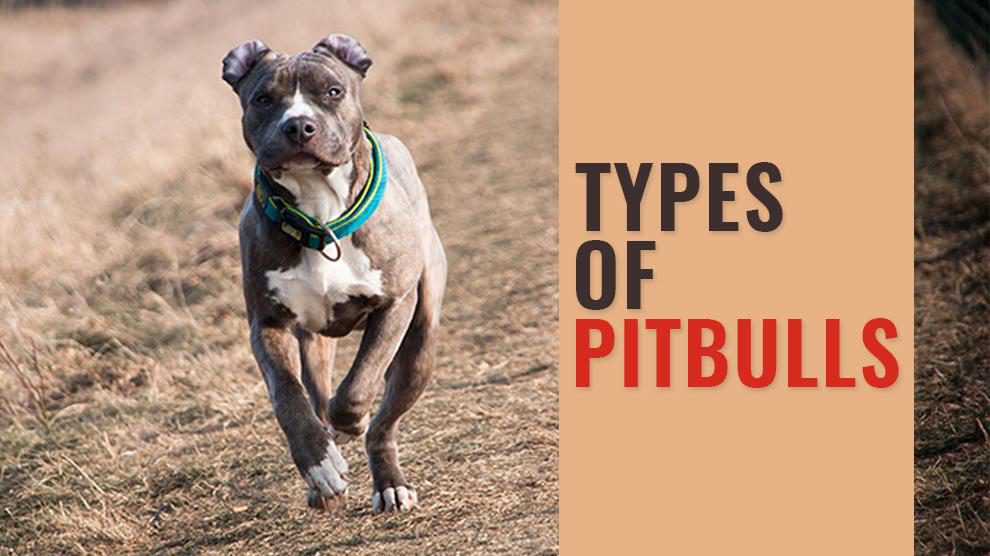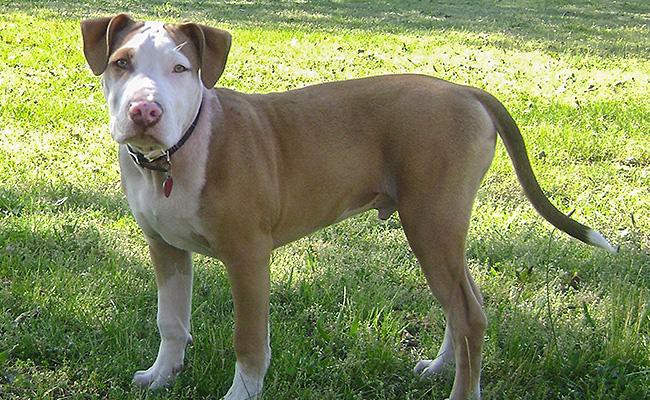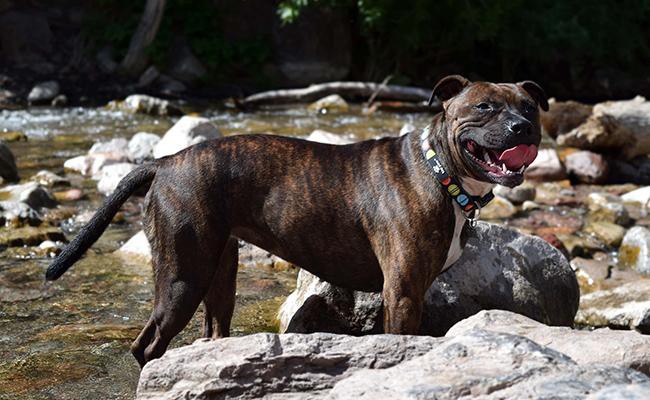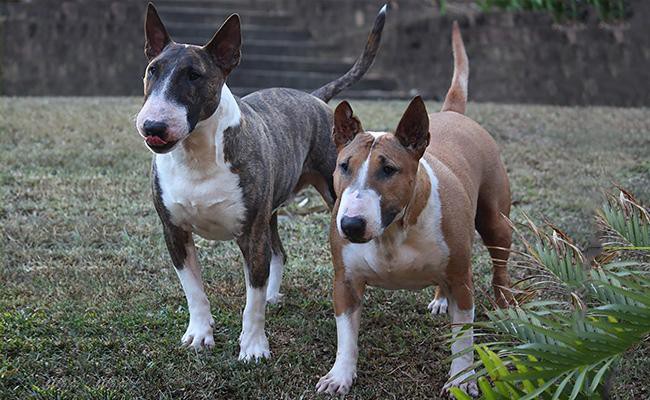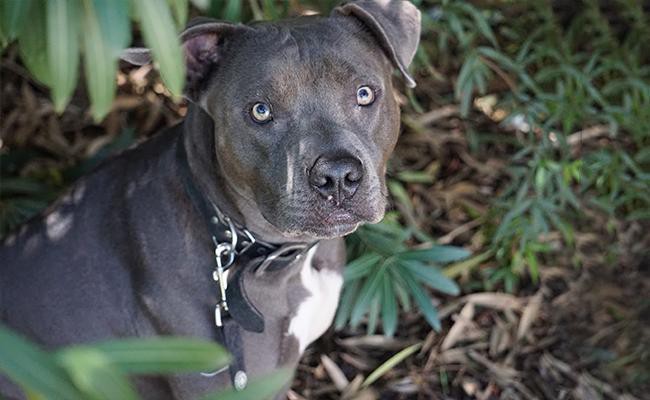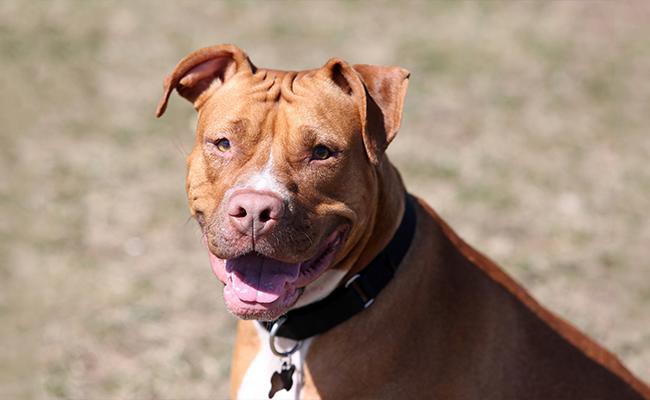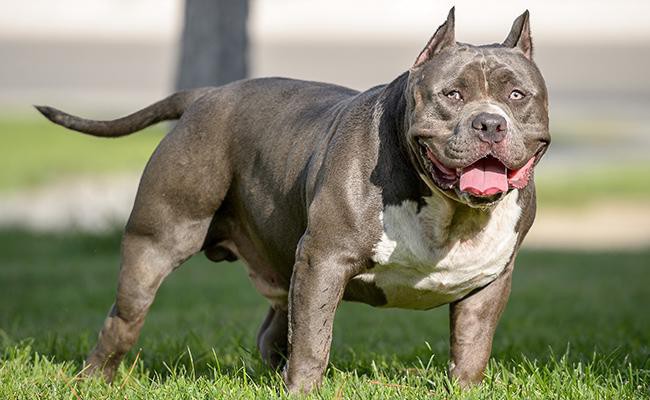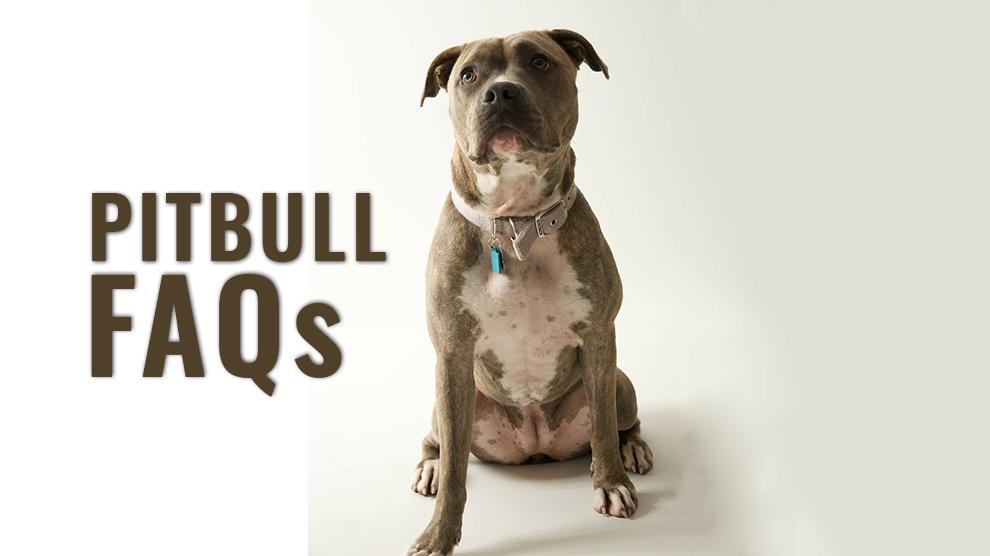Dog Pregnancy Calculator And Timeline
What is a Pitbull dog breed? What are the types of pitbull? – Read the article for a complete understanding.
One of the most widely popular and misunderstood dog breeds of all time, Pit Bulls are not dangerous dogs. These loving, friendly, and affectionate dogs exhibit an aggressive streak of personality.
The name “pit bull” is majorly used as an umbrella term for canines that resemble the American Staffordshire Terrier or American Pit Bull Terrier.
No recognized club or association lists the “Pit Bull” as a separate breed but it may informally refer to the American Pit Bull Terrier.
These days, unfortunately, they have been poorly identified with aggressive behavior and dogfighting through the years.
Pitbull Types (Bully Breeds)
These dogs are mighty and loyal and they serve their master to the best maximum extent. Pitbulls are natural fighters and remain committed despite different situations.
There is so much confusion these days about the Pitbulls. Most people generously use the term “Pitbull” for any dog including mixed breed dogs or a blanket term that have the physical traits of a Pitbull (like a blocky-shaped head and bulky body).
This leads to a lot of mix-ups and confusion, and regrettably, it has even led to people losing their much-loved pets due to breed-specific legislation and misidentification which targets “types” of dogs.
The name of dog breeds in a Pitbull breeds list is confusing, in fact, the only dog breed with the words “pit bull” in the name is the American Pit Bull Terrier (ABPT).
History of Pitbulls
The barbaric men were the number one fans of these dogs called bull and bear-baiting. They would, in olden times, would tie a bear or bull to a post. These dogs would then be set free.
The British developed bulldogs for their gutsiness and strength. Their main aim was to develop an aggressive, powerful, and strong dog.
Once these games were stopped, these game lovers resorted to an underground sport.
They are still using different types of this breed in dogfighting rings. Pits are, in general, eager to please and smart. They will do whatever you want them to do.
Proper early socialization and the right training can turn these dogs into the most loyal and sincere dogs.
They are, in fact, a distinctive breed that is part of a group of ‘working breeds’ that descended from the Molosser dog. Molosser dogs were employed in herding cattle and guarding homes. But few other dog breeds are commonly referred to as pit bulls; Staffordshire Terriers, American Bullies, sometimes American Bulldogs, Bullmastiffs, Bull Terriers, and even boxers.
The American Pit Bull Terrier is the most common breed referred to as the pitbull dog. It is believed to be a cross between terriers and Old English Bulldogs.
Pitbulls gained popularity over the course of almost 300 years till the 19th century in an animal blood sport known as “bull baiting” in medieval Europe, particularly in the British Isles.
After the Bloodsports were outlawed in 1835 in the UK, these Old English Bull Dogs were first brought to the United States from Staffordshire.
Old English Bull Dogs which were crossed with Terriers is a more easy-going, mild-mannered dog that was used to hunt, drive livestock (such as “rat-baiting” and dogfighting), and as family pets.
So, what exactly is a pit bull?
No one actually knows. American Pit Bull Terriers are recognized as an official breed by The United Kennel Club, but the American Kennel Club doesn’t. AKC has listed: the American Staffordshire terrier. (But the United Kennel Club doesn’t list Am Staffs.)
When people think about pit bull types, they’re looking for any breed or mix that has a blocky head and muscular body or what they think of as being a “pit bull.”
On the record, there is no such thing as a pit bull, while it may be used unofficially as a nickname for the American Pit Bull Terrier or the term ‘pit bull’ should be a shortened version of the general term ‘pit bulldog’.
Unfortunately, the term “pit bull” has become linked with aggressive behavior and dogfighting throughout the years. Time and again, this discrimination falls upon the entire category of dogs often referred to as bully breeds.
American Pitbull Terrier
The fearless and strong American Pit Bull Terrier is popular for its friendly nature and temperament.
The standard size varies from medium-large with a good weight range of 30-90 lbs. They have a stocky, smooth, short muscular body, and heart-wrenching powerful jaws.
They are not bad with children but early training can prevent anything untoward.
- Appearance – They are medium-sized, agile, and athletic dogs with a stocky build, short and smooth coat with distinct musculature (neither lanky nor bulky)
- Coat – Short, shiny, and smooth to the touch. Curly or wavy or long coats are disqualifying faults.
- Colors – Black, White, Fawn, Brindle, Tan, Blue, Red, Brown, Grey
- Size – 30 – 80 pounds (13 – 36 kg)
- Height – 14 – 24 inches (35 – 60 cm)
- Life Expectancy – 10 to 13 years. Average is 11
- Hypoallergenic – No
- Best Suited For – Apartment dwellers, those who are living in a house with a yard, and families with children.
- First-time owners – Fairly good
- Temperament – Cheerful, caring, collective, cautious, loyal, independent, playful, energetic
This dog looks fierce and violent, but underneath that rough exterior is a different kind of dog!
Are American pitties affectionate to kids? Yes, American pitties love their families.
They love to cuddle, crawl for caresses, overturn for belly rubs and stick to your side as long as possible. American pitties are viscid “velcro dogs.” - Grooming Needs – Minimal
- Shedding – Moderate to high
- Barking – Good
- Tolerance to Heat – Good
- Tolerance to Cold – Very good
- Trainability – Easy
- Exercise needs – High
- Health issues
- Major health concerns – Presence of joint inflammation in hips, Cerebellar atrophy, and Allergies
- Minor concerns – Patellar luxation, Demodicosis, Zinc-responsive dermatosis, and Progressive retinal atrophy
- Average Price – $500-$700 USD
Staffordshire Bull Terrier
Staffordshire Bull Terriers display high tenacity and courage. At 14-16 inches, Staffies stand somewhat short.
They are muscular, rock-solid terriers. The head looks broad and short, the Staffies have a tight-fitting coat.
At present, breeders, are producing family-oriented, sweet-natured Staffies with goodwill for being a soft dogs for kids. Staffies are true-blue best friendly companions.
- Appearance – They are small, agile, and athletic dogs with a stocky and heavyset build – under 40 pounds – and similar in looks to the larger American Staffordshire terrier or APBT.
- Coat – Short, shiny, and light, close-lying coat.
- Colors – Red, Fawn, White, Black, Blue, All the above colors intermixed with white, any shade of brindle
- Size – Males 13 – 17 kg (28-38 lbs), Females 11 – 15.4 kg (24-34 lbs)
- Height – Males 36 – 41 cm (16-19 inches), Females 33 – 38 cm (14-16 inches)
- Life Expectancy – 12 to 14 years.
- Hypoallergenic – No
- Best Suited For – Those who are living in a house with a yard
- First time owners –Fairly good
- Temperament – Bold, Cheerful, caring, courageous, loyal, independent, playful, energetic.
They are not happy as backyard dogs but love to be a member of your family.
He definitely does not love other dogs and cats, while a few Staffords that are raised with other household pets can live with them in peace. Simply don’t count on it. - Grooming Needs – Minimal
- Shedding – Moderate to high
- Barking – Barks when needed
- Tolerance to Heat – Good
- Tolerance to Cold – Very good
- Trainability – Easy
- Exercise needs – High
- Health issues:
- Major health concerns – Hip dysplasia, Cerebellar atrophy, and Allergies
- Minor concerns – Patellar luxation, cataract, bone, and joint problems, and Progressive retinal atrophy
- Average Price – $1500 – $2000 USD
American Bulldog
The American Bulldogs are brave, trustworthy, reliable, and loyal. These dogs are not at all hostile.
Self-confident and active, the American Bulldogs are child-friendly dogs. They display loyalty to others.
American Bullies need early training and socialization to stop them from turning aggressive or hostile towards strangers. They do both slobber and drool.
Without enough daily physical and mental workouts, they will turn high-strung and can become tough to handle.

- Appearance – He’s not a regular Bulldog and is usually taller as well as leaner than his English cousin.
They belong to Brachycephalics or “smushed-face and nose dog” breeds. - Coat – Short, stiff, and light, close-knit coat.
- Colors – White, Brindle, Red, Fawn, Brown
- Size – Male: 30–58 kg (66-127 lbs), Female: 27–41 kg (59-90 lbs)
- Height – Males 50 – 71 cm (19-27 inches), Females 50 – 61 cm (19-24 inches)
- Life Expectancy – 10 to 15 years.
- Hypoallergenic – No
- Best Suited For – Active people, busy households, and families with children
- First time owners – Fairly good
- Temperament: Affectionate, alert, easygoing, friendly, faithful, Outgoing, pleasant, Responsive
The American Bulldog marches in and right away to make himself a member of the family. The American bullies typically shadow their owners.
As family dogs, they tend to be gentle and protective toward kids and women. They can do well in households with children of any age, but they are not good babysitters. - Grooming Needs – Average
- Shedding – Moderate to high
- Barking – When needed
- Tolerance to Heat – Low
- Tolerance to Cold – Good
- Trainability – Easy
- Exercise needs – High
- Health issues:
- Major health concerns – Brachycephalic Airway Obstruction Syndrome (BAOS), hip and elbow dysplasia
- Minor concerns – Pulmonic stenosis, Progressive Retinal Atrophy, Distichiasis, Hemivertebrae, Hypothyroidism
- Average Price – $700 – $900 USD
Bull Terrier
- Appearance – Easily remembered as the Spuds McKenzie dog that starred in Budweiser commercials, the bull terrier is often mistaken for the APBT.
Stubborn, resolute, and a true terrier at heart, the bull terrier is smallish but don’t let that fool you. He is stocky, and sturdy, with erect ears and a pleasing demeanor.
One of its most notable physical characteristics is its egg-shaped head and unusual, small, triangular eyes which are used to distinguish them from the American pitbull - Coat – Flat, tight, and harsh, yet glossy coat with a softer undercoat
- Colors – White, Red & White, Brindle & White, Fawn & White, White & Black Brindle, Tri-color
- Size – Male: 20–29 kg (44-63 lbs), Female: 20–29 kg (44-63 lbs)
- Height – Males 50 – 61 cm (19-24 inches), Females 50 – 61 cm (19-24 inches)
- Life Expectancy – 10 to 14 years.
- Hypoallergenic – No
- Best Suited For – Active people, busy households, and families with older children
- First time owners – Fairly good
- Temperament – Affectionate, alert, charming, docile, easygoing, friendly, faithful, Gregarious, Outgoing, pleasant, Responsive
This extrovert guy is a larger-than-life clown. Sweet as pie with people, plain and simple.
He’d prefer a busy household that likes his cheerful energy. Wherever the action takes place, you can find him. He has a short coat that is easy to brush.
He doesn’t want to lie dotingly at your feet always. He’d much appreciate it if you got up and came outside with him, and went on a short stroll of, say, 10 miles. - Grooming Needs – High
- Shedding – Moderate to high
- Barking – When needed
- Tolerance to Heat – Good
- Tolerance to Cold – Very good
- Trainability – Easy
- Exercise needs – High
- Health issues:
- Major health concerns – Deafness (Whites), Kidney Problems, Mitral Valve Disease, Lethal Acrodermatitis
- Minor concerns – Entropion, Ectropion, Demodectic Mange, Eye Diseases, Laryngeal Paralysis
- Average Price – $1200 – $2000 USD
Blue Nose Pitbull
- Height – 18-24 inches
- Weight – 30-85 lbs
- Lifespan – 10-15 years
You can characterize Blue Nose Pitbulls by their blue-colored coat and nose. Dog lovers would vouch for the rarity of this breed. They are not just ordinary dogs but a cross between a terrier and a bulldog.
Other than the features like aggressiveness, coat texture, and body structure, the Blue Nose Pitbulls are similar to other pit bulls.
American Staffordshire Terrier
- Height – 18-22 inches
- Weight – 40-55 lbs(female), 55-70 lbs(male)
- Lifespan – 12-16 years
Also called AmStaffs, the American Staffordshire Terriers are affectionate, confident, and intelligent companions.
A well-bred and socialized AmStaff is a sincere, loyal friend to the end. These dogs are muscular, stocky bull-type terriers with well-defined broad jaws.

Red Nose Pitbull
- Height – 18-22 inches
- Weight – 35-65 lbs
- Lifespan – 10-15 years
The red nose Pitbulls have a copper-colored coat and a red-colored nose. Red nose Pitbulls were brought from Ireland and these dogs accompanied their masters when they landed in the US lots of years ago.
The exact reason for this breed’s red-colored nose is unknown. Breeders can get a good quality blue-nosed pitbull or a red-nosed pitbull when bred under proper conditions.
American Bully
- Height – 17-20 inches (male), 16-19 inches(female)
- Weight – 66-110 lbs
- Lifespan – 8-12 years
The American Bully dog is another type of Pitbulls and a good companion. These dogs exhibit confidence with exuberance and energy for life. This breed developed as a usual extension of the strong, powerful American Pit Bull Terrier.
More than its powerful look, the American Bully’s demeanor is friendly and gentle. They make a brilliant and sensible family dog. Good American Bullies have the athleticism to perform well in various events.
This dog seldom behaves aggressively towards humans and no American Bully is extremely shy or brutal.
Pitbull Types and Names
Check out our dog names generator tool, where you can search and filter(by gender, color, size, unique characteristics, and language) the best dog names from a database of over 10,000 dog names.

